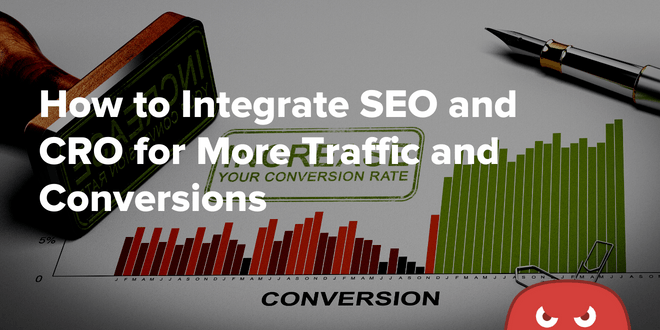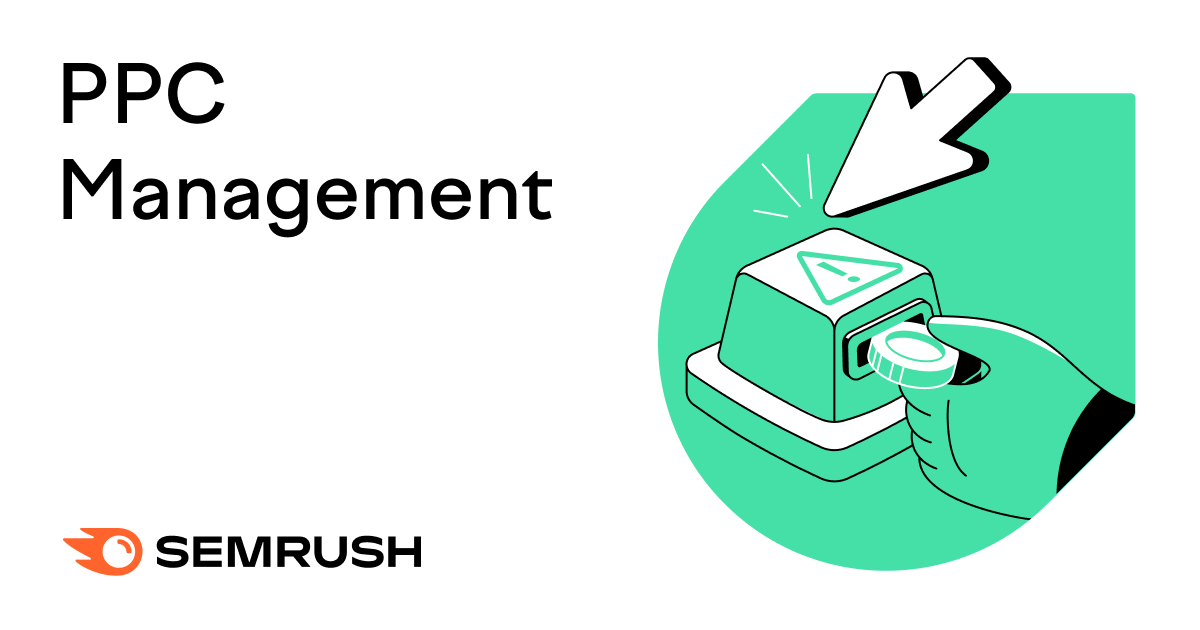
It’s an exhilarating feeling whenever your SEO strategy starts to bear fruit.
After 6 – 12 months of creating SEO-friendly content, making technical tweaks, and doing tons of keyword research – your web pages are finally starting to rank in the top 5 on the SERPs (search engine results pages).
After showing off your elite-level rankings to your stakeholders, they’ll likely want to know how they’re affecting your bottom line.
In other words, how many sales and conversions are you landing from all the organic traffic you’ve been generating thanks to SEO?
That’s when you pull up Google Analytics to find out, and your heart drops to the bottom of your shoes.
Despite your high rankings and boatloads of organic visitors, they aren’t leading to conversions – which means you aren’t earning any extra revenue despite your SEO efforts.
What happened?
In these types of scenarios, the website owner failed to optimize their content for conversions, also known as CRO (conversion rate optimization).
You see, you can generate all the organic traffic in the world to a landing page – but if it’s not optimized to convert – you won’t see any increases in revenue.
However, according to VentureBeat, businesses can increase their ROI by 223% using conversion rate optimization tools and techniques.
If you’re new to CRO SEO, you’re in the right place. Read on to learn how you can successfully marry CRO & SEO together to enjoy not only more organic traffic but also conversions and sales.
SEO vs. CRO: What’s the Difference?
There’s a prevalent misconception out there that SEO & CRO are two competing schools of thought. That’s why many companies think that they need to focus either on SEO or CRO, never realizing that they should place an equal amount of emphasis on both.
That’s because SEO & CRO have a synergistic, co-dependent relationship.
To understand why that is, let’s formally define both.
SEO is short for search engine optimization, and it’s the act of tweaking your on-page and off-page content to cater to search engine algorithms while matching the search intent of your target audience.
SEO is essential for any digital marketing strategy due to the amount of organic traffic it can generate for a website.
In fact, 63% of all shopping journeys begin online, even if the purchase ends up being made in person.
Beyond that, 75% of internet users never scroll beyond the first page of search engine results, which is why ranking on the top page is so crucial for any business eager to gain traffic.
CRO is short for conversion rate optimization, and it involves tweaking your product pages and landing pages to encourage users to make a sale or enter their contact information to generate a lead.
CRO work involves identifying ways to perfect your sales funnel to increase your revenue. That means implementing things like convincing calls to action, glowing customer testimonials, competitive pricing, and a pleasant user experience.
If you only focus on SEO, you’ll generate a ton of organic traffic, but you won’t see an increase in sales. If you focus only on CRO, you’ll increase the earning potential of your landing pages, but you won’t generate any organic visitors to see and interact with them.
How SEO & CRO Work Together to Drive Traffic & Sales to Your Site
Now that you better understand the roles SEO & CRO serve, it’s easy to see why they’re a match made in heaven – and why they should go hand-in-hand when it comes to your online marketing efforts.

Your SEO strategy will bring in a large number of visitors thanks to the following:
- Blog content that establishes you as a thought leader in your field
- Targeted keyword research that represents the terms your audience searches for the most (including transactional & purchase keywords)
- Technical SEO tweaks to get rid of broken links and improve page speed
- On-page SEO tweaks to your content (using keywords, excellent copywriting, alt tags, keywords in metadata, etc.)
- Acquiring high-authority backlinks that boost your SEO profile significantly
Thanks to these tactics, you’ll enjoy a steady flow of traffic to your site, which is ideal.
Yet, that’s only half the equation. For the traffic you generate to translate into sales, you need to optimize your content to convert.
That’s where your CRO strategies come into play.
With CRO, you’ll steadily increase your revenue thanks to the following:
- A/B testing your product page copywriting, messaging, CTAs, and checkout pages
- Including convincing CTAs at the end of blogs, product posts, and landing pages
- Using visible ‘Buy Now buttons throughout your web pages
- Optimizing each stage of your marketing funnel
- Providing a pleasant customer experience complete with effortless navigation
With CRO SEO in place, you’ll generate traffic that goes onto convert, which is the digital marketing equivalent of having your cake and eating it too.
Where Can You Implement CRO Tactics?

If CRO is still a new concept, you may not know where you can put it into practice.
Should you only use CRO techniques on product pages?
The answer is no, as there are a few areas where you can and should use conversion rate optimization strategies, so let’s take a quick look at the most important.
Your homepage
It’s crucial not to neglect your homepage when putting together a CRO strategy.
Why is that?
It’s because your homepage can be a goldmine for conversions as long as you make an outstanding first impression. Besides that, the content on your homepage should pique users’ interest and encourage them to dive deeper into your website.
CRO tactics for your homepage include:
- Highlight internal links to product information. When covering what you do on your homepage, include internal links to your primary product & service pages to increase the chances of landing sales.
- Use a ‘free signup’ or ‘buy now’ button. An excellent lead/conversion magnet to use on your homepage is a ‘free signup’ button to entice users into joining your website. You can also feature a ‘buy now’ button to let customers place an order straight from the homepage.
- Chatbots. Another homepage CRO tactic is to use chatbots to interact with users, answer their questions, and point them toward appropriate products/services. Not only do chatbots boost conversion rates, but they also improve your user experience.
These are all effective ways to boost sales, so don’t forget about your homepage when optimizing your website for conversions.
Pricing page
This primarily applies to businesses that offer subscription services, such as SaaS companies (software-as-a-service).
Your pricing page can make or break your entire CRO strategy, so you’ll need to optimize it if you want to meet your conversion goals.
How do you do that?
In a word, be as detailed as possible when describing your pricing plans. For each tier, include the following:
- The pricing intervals that are available (i.e., billing annually or per month)
- The product features that go along with each price (i.e., security features, more permissions, customer support, etc.)
- A phone number prospects can call for price quotes and more detailed information
- An opt-in pop-up form for your newsletter or email list to generate more leads
Implement these simple tweaks to your pricing page to fully optimize it to convert.
Blog content
While blogs are traditionally seen as ways to generate organic website visitors, they can also become conversion goldmines with the right CRO tweaks.
This comes down to two factors; A) the type of blog content you create and B) the CTAs you include to encourage users to complete your desired action.
First, you should create blogs that are designed to increase leads and sales.
For instance, you could create blog posts describing how your products solve common pain points for your audience and then include a CTA for your product at the end, complete with a link to the product page.
As a quick example, say you run an eCommerce store that sells kitchen appliances and tools.
To boost sales for your potato peelers, you write a blog post about the dangers of peeling potatoes with kitchen knives. All it takes is one small mistake, and you could slash open your skin.
The solution?
Your readers should peel all their potatoes, fruits, and vegetables with one of your high-quality peelers that will never cut their skin.
And just like that, you’ve made a compelling case for one of your products through a simple blog post.
As stated before, you should include CTAs even on blog posts that are educational in nature.
Not only that, but you should inject internal links to related products and services within your blog posts for CRO & SEO purposes.
Landing pages
You should definitely use CRO tactics on your landing pages, as they’re inherently designed for users to take action, and they also have the highest conversion rate out of all signup forms.
How you optimize a landing page will depend on its purpose and content.
For instance, if a landing page is advertising an annual seminar you give, include a video from last year’s presentation to entice users into signing up for the next one.
If the page is a lead generator offering a valuable freebie (think PDFs, eBooks, guides, videos, etc.), then a clever CRO tactic is to provide a preview of your free content.
While it’s crucial not to give away anything especially valuable, users will appreciate being able to preview your content before deciding to enter their email addresses.
Other CRO techniques for landing pages include the following:
- Include one clear CTA (more than one will muddy the waters)
- Try to shorten your text as much as possible – only include the most pressing information and use concise, short sentences
- Use social proof such as case studies, testimonials, and user reviews on landing pages
- Ensure your landing pages load lightning-fast (you can use PageSpeed Insights to help)
- Frequently test your landing page’s bounce rates, conversion rates, and dwell time to see what’s working and what isn’t
- Make your landing pages responsive to display properly on both desktops and mobile devices
CRO techniques are crucial for landing pages, so you should spend plenty of time optimizing them to convert as well as rank on search engines.
3 Ways to Calculate CRO Rates

Setting conversion goals can become a bit complicated due to the nature of how conversion rates work.
It’s different from other metrics, such as total sales.
How is that?
With sales, say you sold 50 copies of a product the previous month. Therefore, your goal for this month could be to sell 100 copies. Pretty straightforward, right?
Well, the same type of thinking doesn’t apply to conversion rates. For instance, if you converted 50 customers with a landing page in one month, trying to add 50 more conversions isn’t a viable goal. Instead, you’ll want to add 50 more conversions for every X number of visitors.
For example, you could try to add 50 more conversions per 1,000 visitors – which would be a 5% conversion rate (which is considered fantastic).
As you can see, your conversion rate has an important caveat; it’s tied to the number of people that visit your website.
So if you add 50 more conversions the next month, but it’s out of 10,000 visitors, your conversion rate is a meager 0.5%, which isn’t too ***.
Here are 3 ways to calculate your conversion rate, the total number of new customers, and a number of leads.
Conversion rate
The formula for calculating your conversion rates is pretty straightforward.
You simply divide the number of conversions by the number of visitors and then multiply it by 100 to get the percentage.
Generated conversions ÷ number of visitors x 100 = conversion rate %
Here are a few examples:
50 conversions ÷ 1,000 visitors x 100 = 5%
200 conversions ÷ 10,000 visitors x 100 = 2%
An ideal conversion rate is between 2 and 5%.
Net new customers
Next, it’s valuable to learn how to calculate how many new customers you need to acquire to meet your revenue goal.
To find out, divide your new revenue goal by your average sales price to get the number of new customers you need.
Revenue goal ÷ Average sales price = number of new customers
$50,000 ÷ $500 = 100
If you want to generate $50,000 and your average product price is $500, you’ll need to acquire 100 new customers to make it happen.
Lead goal
Now that you know how many customers you need to meet your revenue goal, you’ll need to learn how to calculate your lead goal.
What’s that?
Your lead goal refers to how many leads you need to generate to acquire the number of customers you need to meet your revenue goal. Here’s how to calculate it:
Total number of new customers ÷ lead-to-customer close rate % = lead goal
Before you can complete the calculation, you’ll need to know your lead-to-customer close rate. To find that out, divide your number of paying customers by your total number of qualified leads x 100.
Whenever you increase your conversion rate, you subsequently increase your total number of leads and new customers. As an example, if you’re able to raise your conversion rate from 3% to 4%, you’ll double your qualified leads and customers.
Why is this important?
It is because it perfectly illustrates why generating more traffic doesn’t necessarily translate into more revenue.
To visualize this further, take a look at this illustration:
- 10,000 monthly visitors with a 1% conversion rate, meaning you generate 100 new leads and 10 new customers
- 10,000 monthly visitors with a 2% conversion rate, meaning you generate 200 new leads and 20 new customers
- 10,000 monthly visitors with a 3% conversion rate, meaning you generate 300 new leads and 30 new customers
Notice that the number of monthly visitors stays the same, but the number of leads and customers increases with the conversion rate.
So if your SEO strategy is netting hundreds of thousands of monthly visitors, but your conversion rate is at 1%, you need to add a little CRO to your SEO.
Creating Content That Both Ranks Well & Converts
Another misconception is that your SEO & CRO strategies should be somehow separate.
For instance, you work on SEO first and then CRO after.
Well, that’s not the case. To find the most success, you should strive to blend the two together in a way that’s completely seamless.
Every aspect of your website and content should guide potential customers down your sales funnel.
Even if a blog post exists to educate your audience and answer their questions, there should be CRO elements at play that nudge readers closer to becoming customers. Otherwise, you aren’t getting the most out of the content you spent valuable resources to create.
How do you mix CRO & SEO together?
It’s actually pretty simple.
Sticking with the example of an educational blog, you can weave in a few conversion optimization techniques to heighten the chances of landing a sale.
The most obvious way is to include a CTA at the end of the post for one of your related products or services. Another tactic is to include some targeted internal links to product pages and service offerings – so long as they’re relevant to the topic.
After that, you can create several versions of the blog posts for A/B testing purposes. After a few months, take to Google Analytics to check the conversion rates of each post. Whichever post has a better conversion rate is the one you should go with & emulate for future posts.
Here are some proven effective tips for creating content that will tear up the SERPs and increase your conversions and leads.
Match user search intent with SEO content
Creating a content release schedule is a core practice of SEO. After all, without lots of high-quality content containing targeted keywords, search engines like Google wouldn’t have anything to rank.
Yet, beyond identifying keywords your audience is actively searching for, you also need to understand how to match a user’s search intent.
What’s that?
Search intent refers to the intention behind the search or the reason that a user is using a search engine in the first place.
What was the last thing you looked up on search engines, and why did you do it?
If you’ve ever taken to Google to learn the definition of an unfamiliar term, your intent was informational.
In other words, your goal was to educate yourself by finding the information you needed online.
If you’ve ever looked for a specific product using a search engine, your intent was transactional – meaning you were ready to make a purchase right then and there.
Conversely, if you’re looking for the cheapest locksmith services in your town, your intent is commercial. That means you intend on making a purchase, but you need a little convincing first. In this case, you’d likely visit several local locksmith landing pages to compare their pricing.
What you need to realize is that every keyword you use in your SEO strategy has some type of search intent. To optimize for conversions, your content needs to cater to the search intent of each keyword.
Tips for catering to search intent
If you ignore search intent in your CRO SEO strategies, you could wind up costing yourself loads of leads and conversions.
Say that you are searching for a specific product and are ready to buy right now (transactional intent). If the first result you choose from the SERPs (likely the #1 spot on Google) takes you to a lengthy informational blog describing what the product does, you’ll likely return to the SERPs to select another result that more closely matches your intent.
The first website nailed its SEO, as they were the first result that showed up on Google.
Yet, they completely flubbed the CRO side of things, as they failed to consider the search intent behind the keyword they worked so hard to rank #1 for.
As a result, they’ll generate a ton of traffic, but next to none of it will lead to conversions. While a small percentage of users may be willing to accept the blunder and navigate by themselves to the product page (which they should have been directed to in the first place), a large portion will not.
How can you nail search intent every time?
It all starts with awareness, as you’ll need to first understand how crucial search intent is to CRO. After that, it comes down to analyzing every keyword you select to determine its intent. Once you do that, you need to match the content you create with the intent behind the keyword.
So if you determine the intent behind a keyword is transactional, do yourself a favor and create a concise product page for it containing a clear CTA.
Using CTAs to Boost Conversions
Speaking of CTAs, they’re one of the most powerful tools in your CRO bag of tricks. If a website isn’t having trouble with conversion rates, it’s likely due to poor, unclear, or nonexistent CTAs.
As stated before, the purpose of a CTA is to encourage a user to complete the desired action.
There are many desired actions that you may want your customers to complete, which is why there are quite a few different types of CTAs.
Here’s a quick overview of the different types of CTAs you can use on your website to increase conversion rates.
Read more CTAs

While social proofs like case studies and testimonials are important CRO tactics for landing pages, you don’t want them to take up too much space.
The same is true for any blog post previews you want to include on your homepage or in other locations.
The solution is only to include a snippet of text from each case study, testimonial, and blog. After that, include a ‘read more’ CTA button. Whenever users click the button, it will expand to reveal the rest of the text.
These CTAs are so useful because they drastically improve your user experience by decluttering your page – while also accommodating users that would like to see more information.
Lead generation CTAs
Of course, you want your content to generate qualified leads, which is where this type of CTA comes into play.
Common areas to place lead generation CTAs are at the end of blog posts & squeeze pages.
A squeeze page offers something free in exchange for an email address, so you’ll definitely want to include a concise lead generation CTA – otherwise, users may not know what you want them to do.
Purchase CTAs
A purchase CTA is as it sounds – it encourages users to ‘buy now’ without beating around the bush. More than any other type of CTA, it’s imperative to be direct & confident with your purchase CTAs.
That’s because being timid with a purchase CTA communicates that you don’t truly believe in your products or services, which isn’t what you want.
Social sharing CTA
This type of CTA is excellent for SEO, CRO, and brand-building. A social sharing CTA asks your audience to share your content on their social media profiles.
Prime candidates for social sharing CTAs are your blog posts, infographics, videos, and podcasts. By sharing your content, you’ll turn your audience into loyal brand evangelists, spreading the word about what you do far and wide.
Concluding Thoughts: CRO SEO & How They Relate
One final word of advice: it’s best not to pit CRO & SEO against each other. It’s also counterproductive to overthink things.
That’s why once you realize how CRO & SEO gel together, the best thing you can do is take a step back and let them do their thing while you focus on providing the highest quality user experience for your audience.
Need help putting together a CRO SEO strategy for your company?
Then don’t wait for another second to check out HOTH X, our managed SEO services featuring excellent CRO tactics. Our gurus are always available for consulting sessions, so don’t wait to book a call today.


